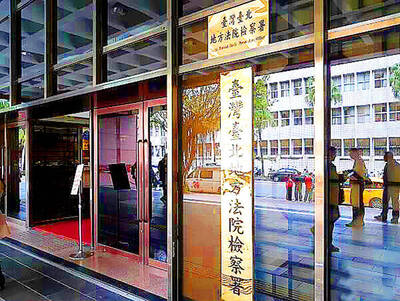Asian giants and economic rivals India and China are locked in battle to secure stakes in oil fields and blocks in the new energy haven of West Africa, officials and analysts here say.
"There is big, big competition going on between India and China for oil blocks in the region," says Narendra Taneja, an energy expert associated with the international oil and gas newspaper Upstream.
Taneja points to a report in a recent Indian Express newspaper report bemoaning the fact that India had lost a lucrative deal in Angola early this month.
Angola's state-owned Sonangol reportedly blocked an Indian move to buy Anglo-Dutch energy giant Shell's 50-percent share in Block 18 for about US$620 million.
According to Taneja, India's state-run Oil and Natural Gas Corporation (ONGC) had almost closed with Shell, "but the Chinese evidently cut a deal with the Angolan government at the last minute," resulting in Sonangol exercising its pre-emption rights.
This stymied Shell's move to sell its stake to ONGC, a deal that would have yielded about 5 million tonnes of crude oil daily for New Delhi from 2008 to 2009.
An Indian official says the sale is "still open," but for Taneja it illustrates the intense Chinese-Indian competition.
"China managed to swing the deal by offering aid to the tune of US$2 billion for a variety of projects to Angola, compared to India's offer of US$200 million for developing railways," Taneja explains.
Aid-for-oil is part of a deliberate strategy adopted by the Chinese leadership across West Africa, whose oil potential came into focus after the Sept. 11 terror attacks, the analysts add.
The amount of oil in the region is yet to be mapped, but Indian officials point to US studies which say Washington can rely on Gulf of Guinea reserves to cut its dependence on crude from the volatile Middle East by 25 percent in the next decade.
"Washington is negotiating with Sao Tome and Principe to develop a naval base there to guard its oil interests in the region," says a foreign ministry official, asking to remain unnamed.
With China overtaking Japan to become the world's second largest oil consumer after the US, Beijing is aggressively building a network of energy-related ties throughout the world -- in the Middle East, Central Asia, Southeast Asia and Russia, the official says.
China used 5.46 million barrels of oil a day last year, compared with Japan's 5.43 million, according to the International Energy Agency. Beijing relies on overseas producers for one-third of supplies and accounts for about seven percent of world oil demand.
In contrast, India -- Asia's fourth-largest economy -- imports nearly 70 percent of its oil needs and last year consumed a little more than 2 million barrels a day.
A government paper predicts that by 2025, India will consume 7.4 million barrels a day.
Top Chinese leaders including President Hu Jintao (
Indian officials admit India does not have the resources to compete barrel for barrel with China in West Africa.
"India had its era of influence in Africa in the heyday of the Non-Aligned Movement in the 1960s and '70s. Today it is money that speaks and China has deeper pockets than India," Taneja said.

INVESTIGATION: The case is the latest instance of a DPP figure being implicated in an espionage network accused of allegedly leaking information to Chinese intelligence Democratic Progressive Party (DPP) member Ho Jen-chieh (何仁傑) was detained and held incommunicado yesterday on suspicion of spying for China during his tenure as assistant to then-minister of foreign affairs Joseph Wu (吳釗燮). The Taipei District Prosecutors’ Office said Ho was implicated during its investigation into alleged spying activities by former Presidential Office consultant Wu Shang-yu (吳尚雨). Prosecutors said there is reason to believe Ho breached the National Security Act (國家安全法) by leaking classified Ministry of Foreign Affairs information to Chinese intelligence. Following interrogation, prosecutors petitioned the Taipei District Court to detain Ho, citing concerns over potential collusion or tampering of evidence. The

Seventy percent of middle and elementary schools now conduct English classes entirely in English, the Ministry of Education said, as it encourages schools nationwide to adopt this practice Minister of Education (MOE) Cheng Ying-yao (鄭英耀) is scheduled to present a report on the government’s bilingual education policy to the Legislative Yuan’s Education and Culture Committee today. The report would outline strategies aimed at expanding access to education, reducing regional disparities and improving talent cultivation. Implementation of bilingual education policies has varied across local governments, occasionally drawing public criticism. For example, some schools have required teachers of non-English subjects to pass English proficiency

NEGOTIATIONS: The US response to the countermeasures and plans Taiwan presented has been positive, including boosting procurement and investment, the president said Taiwan is included in the first group for trade negotiations with the US, President William Lai (賴清德) said yesterday, as he seeks to shield Taiwanese exporters from a 32 percent tariff. In Washington, US Trade Representative Jamieson Greer said in an interview on Fox News on Thursday that he would speak to his Taiwanese and Israeli counterparts yesterday about tariffs after holding a long discussion with the Vietnamese earlier. US President Donald Trump on Wednesday postponed punishing levies on multiple trade partners, including Taiwan, for three months after trillions of US dollars were wiped off global markets. He has maintained a 10 percent

TRADE: The premier pledged safeguards on ‘Made in Taiwan’ labeling, anti-dumping measures and stricter export controls to strengthen its position in trade talks Products labeled “made in Taiwan” must be genuinely made in Taiwan, Premier Cho Jung-tai (卓榮泰) said yesterday, vowing to enforce strict safeguards against “origin laundering” and initiate anti-dumping investigations to prevent China dumping its products in Taiwan. Cho made the remarks in a discussion session with representatives from industries in Kaohsiung. In response to the US government’s recent announcement of “reciprocal” tariffs on its trading partners, President William Lai (賴清德) and Cho last week began a series of consultations with industry leaders nationwide to gather feedback and address concerns. Taiwanese and US officials held a videoconference on Friday evening to discuss the